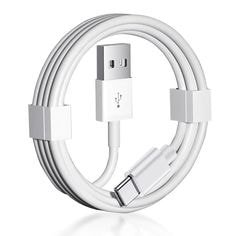
A Retailer’s Guide to USB Cable Certifications: What Matters for Safety?
2025-04-13The Importance of USB Cable Quality in Device Performance
In today’s interconnected world, USB cables are essential for charging devices, transferring data, and connecting peripherals. However, not all USB cables are created equal. The quality of a USB cable can significantly impact device performance, affecting charging speeds, data transfer rates, and overall device longevity. This article explores the importance of USB cable quality and provides guidance on selecting the right cable for your needs.
Understanding USB Cables and Their Functionality
USB (Universal Serial Bus) cables serve as the standard interface for connecting various devices, including smartphones, laptops, printers, and external storage devices. They facilitate the transfer of power and data between devices, enabling functionalities such as charging and file sharing.
Types of USB Cables
- USB-A: The traditional rectangular connector commonly found on computers and chargers.
- USB-B: Typically used for larger devices like printers.
- USB-C: The latest standard offering faster data transfer speeds and higher power delivery capabilities.
- Micro-USB: An older standard still used in some devices.
Each type has its specifications, with USB-C being the most advanced, supporting faster charging and higher data transfer rates.
The Impact of USB Cable Quality on Device Performance
The quality of a USB cable can influence several aspects of device performance:
Charging Speeds
High-quality cables are designed to handle higher currents, facilitating faster charging. Low-quality cables may not support the required current, leading to slower charging times.
Data Transfer Rates
For tasks like transferring large files or streaming high-definition content, the data transfer rate is crucial. Cables that support higher standards, such as USB 3.1 or USB4, offer faster data transfer speeds, reducing wait times.
Device Longevity
Inferior cables can cause voltage drops or signal interference, potentially damaging device components over time. High-quality cables ensure stable power delivery and data integrity, prolonging device life.
Key Factors That Define USB Cable Quality
Several factors contribute to the overall quality of a USB cable:
Cable Gauge (AWG)
The American Wire Gauge (AWG) rating indicates the thickness of the internal wires. Lower AWG numbers denote thicker wires, which can carry more current and reduce resistance, leading to better performance.
Shielding
Good shielding protects against electromagnetic interference (EMI), ensuring stable data transmission. Poorly shielded cables are more susceptible to signal degradation.
Connector Quality
Durable connectors with gold-plated contacts resist corrosion and provide a more reliable connection. Low-quality connectors can lead to intermittent connections and data loss.
Build and Durability
Cables with reinforced stress points and durable outer jackets (e.g., braided nylon) are less prone to wear and tear, enhancing their lifespan.
How to Choose the Right USB Cable for Your Devices
Selecting the appropriate USB cable involves considering several factors:
Determine Your Needs
Identify the primary use of the cable—whether it’s for charging, data transfer, or both. For instance, if you need to transfer large files quickly, opt for a cable supporting USB 3.1 or USB4 standards.
Check Device Compatibility
Ensure the cable is compatible with your device’s port and supports the required power delivery and data transfer standards.
Consider Cable Length
Longer cables can cause voltage drops and signal degradation. Choose a cable length that suits your setup without compromising performance.
Invest in Quality
Opt for cables from reputable manufacturers that adhere to USB-IF (USB Implementers Forum) standards. Certified cables are more likely to deliver optimal performance and safety.
Conclusion
The quality of your USB cable plays a pivotal role in the performance and longevity of your devices. Investing in high-quality cables ensures faster charging, efficient data transfer, and protection against potential device damage. By understanding the factors that contribute to USB cable quality and selecting the right cable for your needs, you can enhance your device experience and avoid common connectivity issues.
FAQs
Q1: Can a low-quality USB cable damage my device?
A1: Yes, poor-quality cables can cause voltage drops or signal interference, potentially damaging device components over time.
Q2: Does the length of a USB cable affect its performance?
A2: Yes, longer cables can lead to voltage drops and signal degradation, affecting charging speeds and data transfer rates.
Q3: Are all USB-C cables the same?
A3: No, USB-C cables vary in quality and specifications. It’s essential to choose cables that meet your device’s requirements.
Q4: How can I identify a high-quality USB cable?
A4: Look for cables with certifications like USB-IF, durable connectors, and appropriate shielding. Reputable brands often provide detailed specifications.
Q5: Is it worth investing in premium USB cables?
A5: Yes, investing in quality cables can improve device performance, ensure safety, and prolong the lifespan of your devices.







